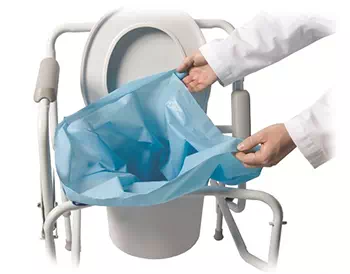 |
||
- Regulated Medical Waste
- Hazardous Materials
- Hazardous Waste
- Pharmaceutical Waste
- Regulations
- Waste Reduction
- Facilities Management
- Assisted Living /
Nursing Homes - Dental Offices
- Search
- Contact
- Home
|
Wastes
This section of HERC provides an overview of regulated wastes commonly found at assisted living/nursing home communities. Numerous links are provided to further investigate federal and state regulations and to locate guidance documents and points of contact. Medical Waste Regulated medical waste (RMW), also known as ‘biohazardous’ waste or 'infectious medical’ waste, is the portion of the healthcare facility waste stream that is contaminated by blood, body fluids or other potentially infectious materials, thus posing a significant risk of transmitting infection. RMW is defined and regulated differently in each state. Generally, generators of RMW must follow management standards for segregation, packaging, labeling, and storage of the waste, maintain records and dispose of the waste via licensed transporters. For additional information, see
Pharmaceutical Waste Unused medications create a public health and safety concern because they are highly susceptible to accidental ingestion, theft, misuse, improper disposal, and abuse. Pharmaceutical waste is especially a challenge for healthcare facilities considering changing regulations, guidance, and policies. This section outlines the rules applicable to healthcare facilities and provides links to compliance assistance information. In 2019, EPA published a rule to establish standards for the management and disposal of hazardous waste pharmaceuticals (e.g., chemo drugs) generated by healthcare facilities. The rule applies to long-term care facilities (e.g., hospice facilities, nursing facilities, skilled nursing facilities, and the nursing and skilled nursing care portions of continuing care retirement communities), but not to assisted living facilities (e.g., group homes, independent living communities, and the independent and assisted living portions of continuing care retirement communities). EPA made an important distinction in the hazardous waste pharmaceuticals rule regarding the size of long-term care facilities and the applicability of the regulations. Under the rule, long-term care facilities with 20 or fewer beds are presumed to be very small quantity generators (VSQGs) of hazardous waste. Facilities with more than 20 beds, bear the responsibility of demonstrating that they qualify as a VSQG. This is an important distinction because VSQGs have the option of conforming to the rule or continuing to operate under the general hazardous waste regulations. [More information on VSQG status.] In 2014 the U. S. Drug Enforcement Administration finalized the Rule for the Disposal of Controlled Substances, which implements the Secure and Responsible Drug Disposal Act of 2010. This Act permits long-term-care communities to transfer unused or unwanted pharmaceutical controlled substances to authorized collectors for the purpose of disposal or do the same on behalf of residents or former residents of their communities. For more information on pharmaceutical wastes see:
Hazardous Waste Nursing home and assisted care communities generate significant quantities of waste materials. Some of these materials have been designated by EPA as "hazardous wastes" because of their potential to become particularly harmful to human health or the environment. Examples include spent cleaning products and paint solvent. Hazardous wastes are heavily regulated by federal and state rules and larger generators are required to obtain a EPA or state identification number. To help determine if your wastes are hazardous and find out how to manage and dispose of them, see:
Vehicle Maintenance Wastes Vehicle maintenance generates used fluids and oil filters that must be managed and disposed of in accordance with federal and state regulations. The following are the most common vehicle maintenance wastes (links provided below take you to the Transportation Environmental Resource Center):
Universal Waste Some common items contain materials that would cause them to be classified as hazardous wastes, according to federal rules. EPA has developed a special category of such materials, called "universal wastes," to ease the burden of complying with hazardous waste regulations and encourage the recycling or proper disposal of these items. Among others, used florescent bulbs, batteries and mercury containing equipment are universal wastes. States do have autonomy when it comes to the universal waste rule. They do not have to accept it, they can add or remove wastes, or they can have more stringent requirements. Therefore, it is important to check on the rules in your state. For more information, see
|
